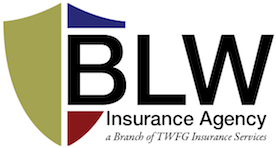
I just want to take a moment to talk about actual cash value versus replacement cost insurance. When your home, personal property or business building is insured, the policy will pay for claims one of two ways. The first way is called replacement cost insurance. Basically, you have replacement cost coverage. The insurance company will pay to put you back where you were before the loss. If your home office is damaged, it’s going to be repaired to the way it was before the damage with materials similar quality to what you had before.
The second way claims are paid is called, actual cash value or ACV. While, replacement cost pays you enough to replace the property with new materials, actual cash value only pays for the value of the property when it was damaged or destroyed. In other words, ACV takes into account the age of the property and the fact that the value decreases over time, no [inaudible 00:00:59] depreciation. For example, let’s say that you have a 10 year old roof, which is damaged in a storm and your entire roof needs to be replaced.
The cost to replace the roof is $12,000 and it’s halfway through it’s anticipated life of 20 years. Replacement cost pays for the full $12,000, the cost to replace the roof with the same type of shingles that you have now. Actual cash value only pays $6,000, which is the replacement cost of the roof minus 10 years of depreciation. That’s a big difference.
While we’re talking about actual cash value, let me explain there’s two ways insurance companies calculate ACV claim payment. One option is to estimate the fair market value to property when the loss occurs. Fair market value is what a willing power would pay for the property before it was damaged or destroyed.
As you can imagine, it can be tricky to determine fair market value especially, when it isn’t a total loss. The other option is to determine ACV by taking replacement cost and subtracting depreciation. Unless the insurance policy states otherwise, California state actually says that this is the way the ACV calculation should be made.
In the power example that the replacement cost of 12,000, depreciation is 6,000 so the amount paid for the claim is 6,000. Obviously, you wanna get a check for the replacement cost value, so why would anyone else buy a actual cash value policy? As you can already see, making sure that your policy will pay for what you expect, isn’t always simple.
That’s why we’re here. You can read the rest of this video on our blog site or better yet, just ask us and we’ll make sure that you don’t have any claim payment surprises if you have a loss.


